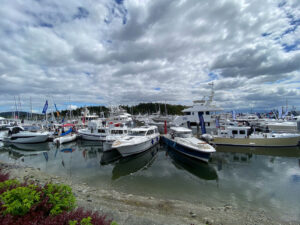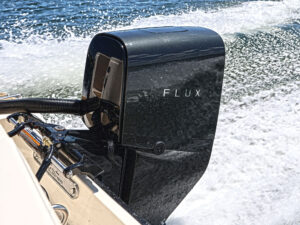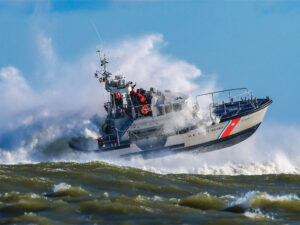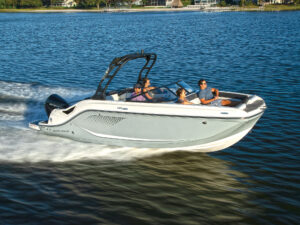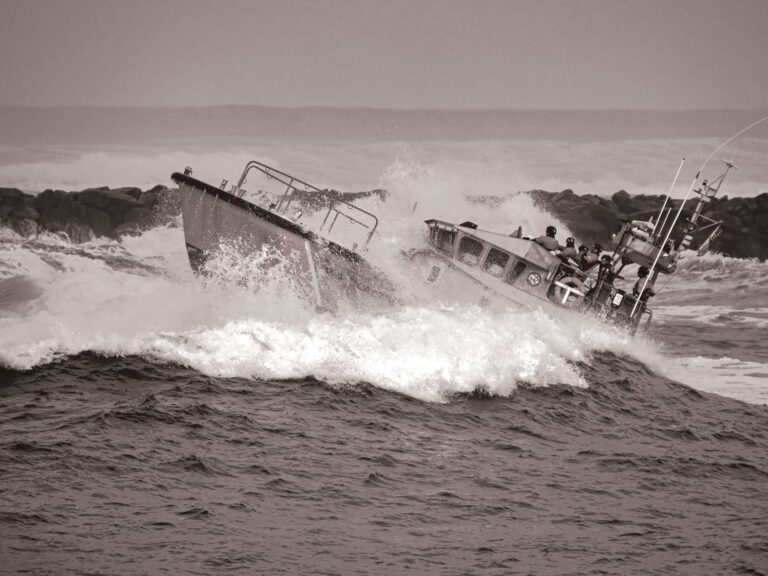Many boatbuilders take justifiable pride in refreshing their models each year as customers and dealers make suggestions. Some also plan on a complete re-design every five-to-seven years to take advantage of new equipment, materials, design concepts, and manufacturing systems. Some of these improvements are outstanding, and we applaud the attention to detail they represent. Several of such builders garner high CSI scores each year.
Every once in a while, though, we come across a model that has remained in a builder’s line for a significant length of time, because its enduring value continues to attract customers. This winter, four of these long established “modern classics” put us to thinking about what characteristics contribute to their continuing appeal. Here they are:
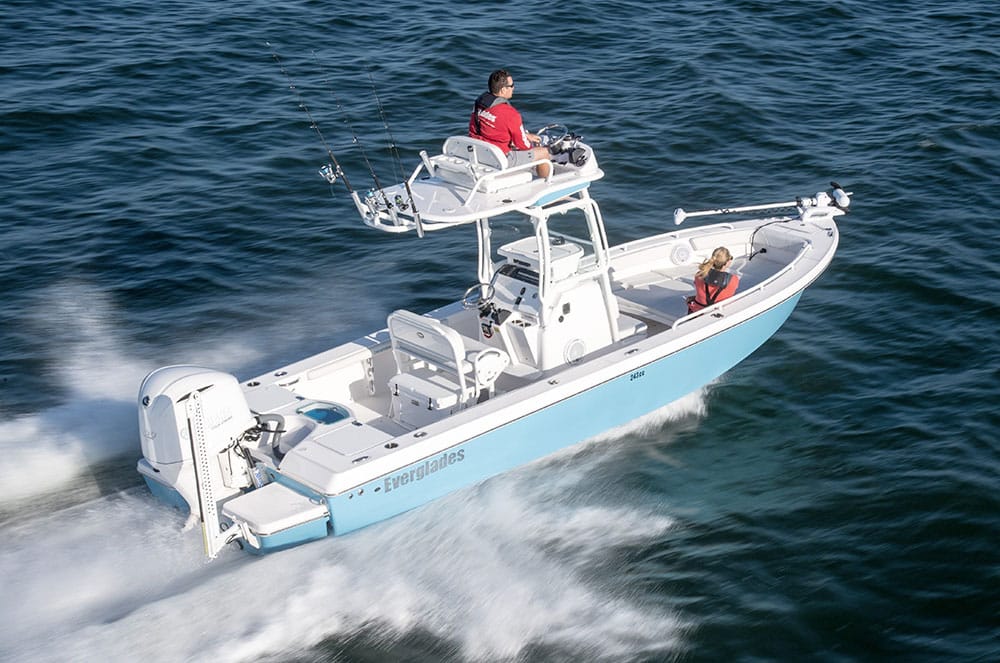
Everglades 243 CC
In 2004, BOATING tested hull #4 of the brand-new Everglades 243cc, the first “hybrid bay boat” that could run shallow inshore but still handle big seas offshore. It was impressive then and still is, eighteen years and 1,400 hulls later, judging by a new one we ran recently in sporty big-water seas on the lower Chesapeake. We asked David Brown, Vice President of Product Development & Engineering why Everglades Boats still offers it. “It’s the ride and the variable-deadrise hull shape,” he explained. “We build 70-80 243cc’s each year because demand remains strong. It’s sort of a cult boat.”
Even so, Everglades adds features as they become available. Everglades Founder Bob Dougherty designed the 243cc for Yamaha’s original 225-hp four-stroke outboard, which powered our 2004 tester. Today’s engine is the F300, which offers more power on less fuel, plus Helm Master EX electronic steering and controls, with autopilot and joystick. The original canvas T-top has morphed into a composite hardtop with VHF and storage box, stereo speakers, life jacket storage, rod holders, and a ski pylon. The optional Fishing Package includes a T-and-H Atlas jackplate, an 8’ Power Pole shallow water anchor, and a 36-volt Minn Kota iPilot bow mount trolling motor. For sight fishing, a full upper steering station is available with controls and electronics. A pair of transom lifting platforms, built separately and foam-filled, bolt on for added buoyancy, lift, and a base for the PowerPole.
Other upgrades include lighted stereo speakers, SeaDek pads, a Yeti on a slide under the helm seat, and Garmin electronics. Everglades engineers monitor updates to the systems standards promulgated by the American Boat & Yacht Council (ABYC) and the National Marine Manufacturers Association (NMMA). For example, the three 12-volt trolling motor batteries fit into a bow compartment on mounts that must pass an ABYC pull test. After eighteen years, the Everglades 243cc remains a safe, seaworthy rig, an investment whose working lifespan measures in generations rather than years. It endures because it works.
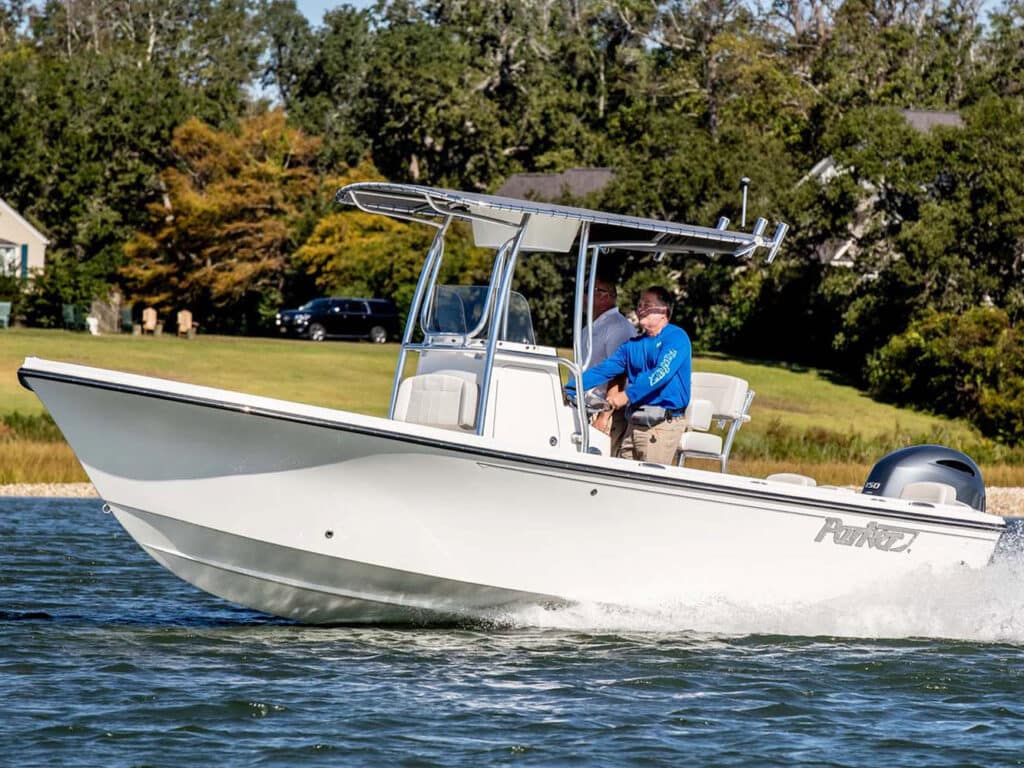
Parker Offshore 21SE and 23SE
While Parker Offshore is now a division of Correct Craft, the boats are still built in Beaufort, NC by the same people who did so under Parker family ownership. The company adds Offshore to its name, but the 21SE and 23SE (Special Edition) models are simple and tough, with shallow drafts, true to Linwood Parker’s inshore workboat roots. Developed around 2004, the hull forms are 2nd generation modified-Vs, with 14-degree running bottoms. The deadrise flows evenly from the transom to a sharp forefoot, with classic Carolina bow flare and sheerline. The chines turn up gradually to follow the sheer.
The hulls are rock-stable at rest but lift easily onto plane at speeds in the low teens. As the designer told us in a phone conversation, “Running outside, it’s all in how you use the boat [adjust speed to the seas]. She’s got a nice bottom and enough weight to ride well. The rising sheer and the flare mean the bow can’t go down into a sea without creating resistance. The flare peels water off, increasing buoyancy.” Trim tabs recessed into the hull bottom are standard on the 23SE and optional on the 21SE. They are especially valuable for dialing in fore-and-aft trim while adjusting speed to fit sea conditions.
To ensure self-bailing, the cockpit includes a carefully crowned deck an inch higher in the center, with scuppers 3” above the waterline. To prevent clogging, stainless grates cover the scuppers with one-way flaps at the transom. The hull’s interior provides 19-21” cockpit depth for bracing legs.
The Special Edition models do not have inner liners, which saves weight and cost while offering under-gunwale horizontal rod racks with toerails and showing off Parker’s strong hull-to-deck shoebox joint fastened with adhesive but also through-bolted with washers and stopnuts. A forward casting deck is optional, but light tackle guides operating in rough coastal waters often do without, allowing casters in the bow to stand lower and brace against the coaming. The 23SE offers 65” headroom in the console for a portable toilet.
These SE models were designed for Yamaha’s original F150 (21SE) and F225 (23SE). The efficiency of the hull form, however, has allowed the 23SE to run very well with the more-recently introduced F200, which keeps both the price and fuel burn low. Mike Patrick, Parker’s National Sales Manager, tells us the greatest demand for the 21SE and 23SE comes from anglers and families in the open waters of New England and the Chesapeake Bay (where they are favorites of several of this writer’s friends). Between the standard features and options, SE boats offer “Everything you need, nothing you don’t.”
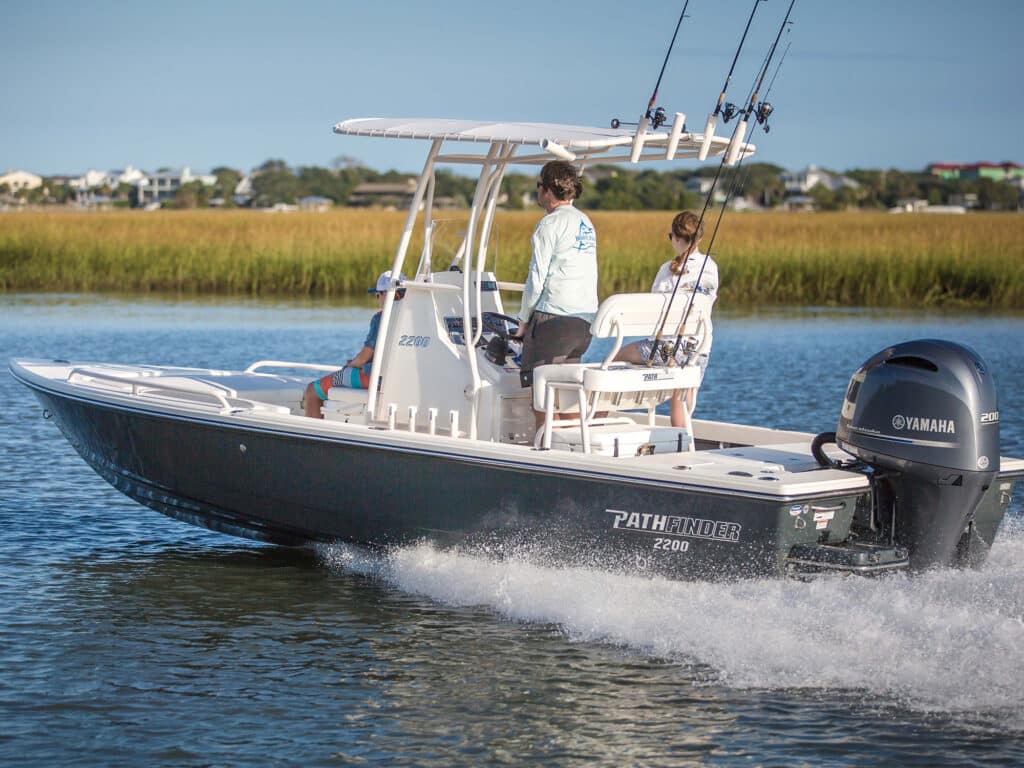
Pathfinder 2200 TRS
The 2200 TRS is the modern version of the original Pathfinder, introduced in 1998. The company adapted the hull from the Maverick 21 Master Angler, using the same running surface (which also survives today as the Redfisher 21 under the company’s sister brand, Hewes). “Around 2008,” Pathfinder’s longtime Director of Sales and Marketing Charlie Johnson told us, “we substituted a 25” transom to raise the topsides and create more distance between the cockpit floor and drains, improving self-bailing capability while adding just enough additional hull volume to offset the weight of four-stroke outboards.” He noted that 55% of 2200s go out rigged with Yamaha’s F200s and 35% with F150s. Performance is excellent with both engines, which have well-deserved reputations for longevity and fuel efficiency. A few equipped with jackplates and F250s go to the Texas coastal bays.
Also around 2008, Pathfinder added seats and storage under the stern deck, improved rigging access, and enlarged the anchor locker. The company relocated the hinges on the lids of the bow storage compartments to the forward edges for easier loading of rods (check Charlie’s 2200 TRS video on the Pathfinder web site). In 2012, they added under-gunwale rod racks, front access to the console, and a toe-kick under the console. “Cockpit drainage and access changes have been the big ones. “All of the changes to the 2200 over the years have been 100% based on experience with the boat by customers, dealers, and Pathfinder staff,” Charlie added. “My family owns a 2200. We do everything with it, offshore runs on good days for sailfish, water sports, sand bar picnics, sunset cruises. Cushions on the recessed forward lounges and grab rails beside them allow two passengers to ride facing forward on social trips.
“It’s a good sea boat [this correspondent remembers running one of the originals through 4-5’ seas in Ft. Pierce Inlet in 1998]. Pick your days, know your boat, and pay attention. You’ll do fine. I don’t know if there’s a more successful family boat for utility and ease of use. The evolution of the 2200 comes from our being on the boats through the years and thinking about how to make ‘em better. It’s still our highest-selling boat.”
Read Next: The Future of Boat Design
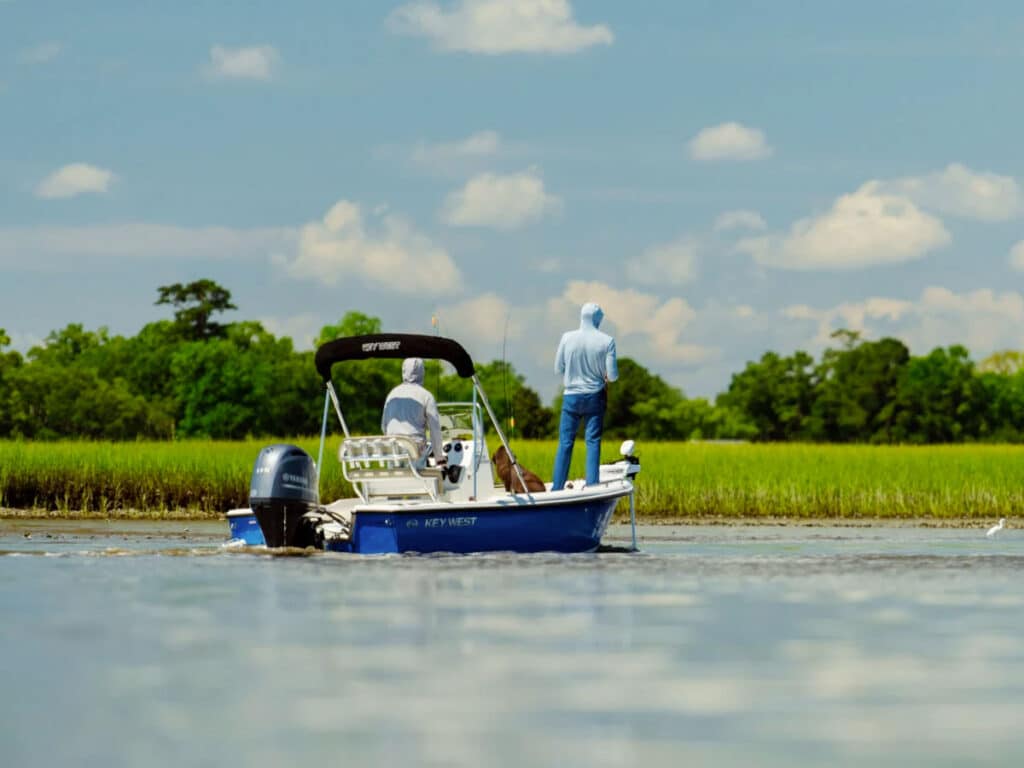
Key West 1720 CC
“Our most popular model, year after year since 1992,” proclaims the Key West website. “It just fits,” said Tom Marlowe, longtime Director of Sales at Key West, with a smile, “fits your budget, fits your fuel bill, fits your tow vehicle, fits your family, fits your needs, fits your garage (in case your HOA doesn’t allow boats parked outdoors).” There has always (or at least for sixty years) been something special about 17’ center console skiffs that could go shallow or safely handle wide, choppy coastal bays. The Key West 1720 CC remains a worthy example of the breed.
We had a chance to live with one back in 1997, when Suzuki made it available to show off its then-new 70-hp four-stroke. It carried that engine well, but Key West rebalanced it around 2006, Marlowe told us, to carry 90-hp four-strokes better. The company shifted the battery from the starboard stern quarter to the console, moved fuel tank forward 4”, and increased its capacity from 31 to 40 gallons. “The most popular power has always been a 90,” he said, but a 70 is adequate for many uses.” The current 1720 CC has the same running bottom as its predecessor in 1992.
Key West Boats believes in the enduring quality and seaworthiness of the 1720 CC enough to enter it each year in the Florida Skiff Challenge, a grueling, 1,300-mile circumnavigation of the Florida peninsula. “She comes through just fine,” said Marlowe. (We note that his son Mike is one of the skippers). Trim tabs are optional on the 1720 CC “but generally not needed,” Marlowe added. The boat planes around 18 mph with a 90-hp engine and no tabs, tops out at 40. With a 70 (the horsepower limit, by the way, for the Skiff Challenge), it planes a little lower (and even lower with tabs) and tops out in the low 30s. The former would be the choice for lakes and calm coastal bays, the latter for broader, rougher open waters.
When the time came for a new mold in 2016, Marlowe told us, the designers raised the topsides and cockpit sole 2” so the boat would self-bail with people aboard. They modified the console to accommodate flush-mount electronics, rounded the corners there and on the windshield, and softened the lines. The 1720 is now available with wiring for a bow-mount electric motor, dual batteries, and an on-board charger. Most buyers are serious fishermen, but plenty still buy the 1720 CC for general family use, sunset cruises, dock n’ dine trips, and sandbar visits. For all of these uses, it just fits.
Conclusions
So what factors build the enduring appeal of these modern classics? Here’s what we found:
- All of them are versatile, open utility boats, ready for their owners to fit them to various water activities.
- Each is efficient enough for light tackle and fly-fishing that guides own and use them with clients.
- Each is a “little big boat”, an overachiever that is seaworthy for its size, with an engineered self-draining cockpit.
- Two (the Pathfinder and the Key West) have survived the transition from two-stroke to four-stroke outboards with modifications, including weight balance, higher topsides, and cockpit soles for self-draining.
- The others (the Everglades and the Parkers) were designed around original four-strokes in the early 2000s.
- They are relatively simple in layout, though options like lounges are optional on some. Only one (the Parker 23SE) offers enough headroom in the console (65”) for a toilet. People have for centuries found ways to work around that perceived limitation.
- All are economical to run.
- They are sturdy and well built.
- They are easy to maintain.
- They are trailerable with compact to standard SUVs and pickups.
- They hold their value; some family boats are passed down from generation to generation because they are so generally useful and, for that reason, well loved. They simply make sense.

